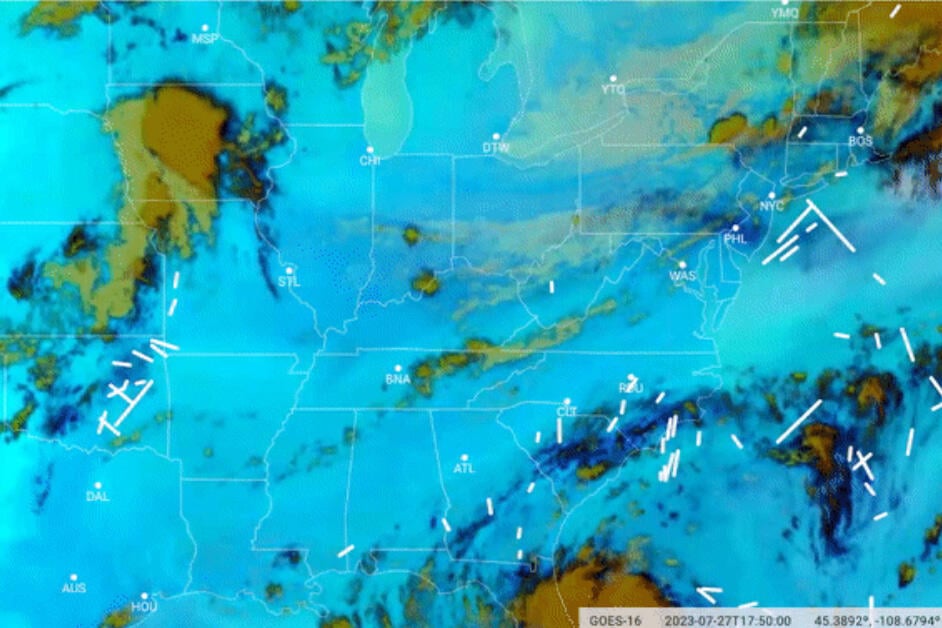Innovation and regulation set pace for AI advances
Leadership Insights newsletter story
Exploring how AI is being deployed in other transport sectors offers vital insights for its future deployment in shipping.

Across transport modes, improving efficiency and safety are the go-to problems for developers of artificial intelligence (AI) systems. But as machine learning capabilities grow, an increasing number of creative solutions are being applied across a wider range of transport-related areas.
In one notable example, Google recently worked with American Airlines to identify flight paths that would not cause pollution contrails. A contrail model was combined with satellite imagery, weather and flight path data, allowing the company to develop contrail forecast maps. Pilots using AI models to choose different altitudes when flying were able to reduce contrails by 54%, indicating the potential to significantly reduce the 2.5% of global CO₂ emissions accounted for by aviation.
According to Paul Sells, CEO of ABS-affiliated software-as-a-service company ABS Wavesight, such novel uses are rapidly being embraced by maritime AI developers. He sees AI becoming a particular differentiator as fleet performance software becomes critical for compliance with a complex regulatory regime and maintaining competitive advantage.
Sells notes: “Because there are existing business cases from other industries where AI is being used, we are at an advantage for incorporating some of the areas into the software that exists today – such as streamlining and standardising the way data is ingested and analysed and moving from real-time to predictive analytics.”
AI could disrupt transport business models as well as operations. In September, logistics startup Zerobroker raised US$6.5 million in seed funding to expand its AI-powered platform that removes freight brokers from the shipping process. By connecting shippers directly with carriers, Zerobroker eliminates the commission fee traditionally charged by freight brokers on each transaction, allowing shippers to lower their transportation costs significantly.
One potential impediment to the uptake of AI is regulation. A large part of the challenge is the inherent opacity of AI systems, the ‘black box effect’, particularly where safety critical operations are involved. The issue was articulated in a 2019 report from the International Transport Forum.
“A regulatory agency may licence a specific technology,” the report noted. “But as the algorithms rewrite themselves to better perform in real-world environments, the resulting code no longer bears any resemblance to the initial licensed code. Further, later iterations of the code may have evolved so much that the regulatory agency is no longer able to understand how they function.”
In response to those threats, among others, the European Commission proposed an AI Act in April 2021 that is now in the final stages of negotiations between the European Commission, Parliament and Council. The Act would place drastic restrictions on AI systems classed as ‘high risk’, requiring that human intervention is facilitated. To support innovation, research activities and the development of free and open-source AI components would be largely exempted from compliance.
In shipping, the International Maritime Organization’s (IMO’s) approach to regulating AI is developing on a case-by-case basis. One of the first areas for exploration is autonomous vessels. The draft Maritime Autonomous Surface Ship (MASS) Code features a section on software principles, including that ‘life and death decisions or other decisions affecting fundamental human rights of individuals must not be ceded to AI systems, as these decisions require human intervention’.
Those elements will be debated at the next meeting of the IMO Marine Safety Committee (MSC 108) in May 2024. In shipping, as for other transport modes, the complexity of such regulation makes the long-term deployment of fully automated vessels and traffic management systems challenging. But there are plenty of opportunities along the way for those with the creativity and foresight to grab them.
Related content

Aviation’s alternative fuel transition requires cross-sectoral government policy

Bjorn Otto Sverdrup: Oil and gas majors target transport emissions

Flip the script: Shipping’s approach to novel technology
